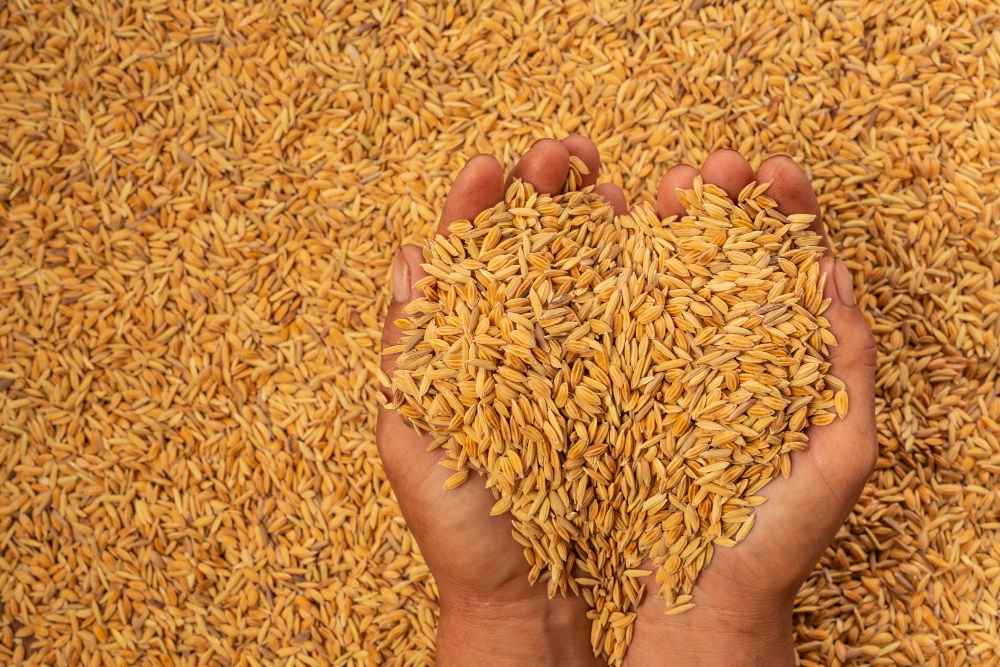In a world where dietary preferences and health consciousness continue to evolve, long grain brown rice emerges as a staple that not only satisfies hunger but also nourishes the body. With its distinct nutty flavor and chewy texture, this whole grain has become a favorite among health enthusiasts and culinary aficionados alike. Let’s delve into the multifaceted world of long grain brown rice and explore its nutritional benefits, health advantages, culinary versatility, and environmental impact.
Nutritional Benefits
Fiber Content
Long grain brown rice is renowned for its high fiber content. Unlike its refined counterpart, white rice, which undergoes milling that removes the bran and germ layers, brown rice retains these nutrient-rich components. A single serving of brown rice provides a significant portion of the daily recommended intake of dietary fiber, promoting digestive health and aiding in weight management.
Protein Content
As a whole grain, long grain brown rice boasts a notable protein content. This makes it a valuable addition to vegetarian and vegan diets, providing essential amino acids necessary for muscle repair and growth. Incorporating brown rice into meals can contribute to balanced nutrition and sustained energy levels throughout the day.
Vitamins and Minerals
Long grain brown rice is a natural source of vitamins and minerals, including B vitamins, magnesium, and phosphorus. These micronutrients play crucial roles in various physiological processes, such as energy metabolism, bone health, and nerve function. By choosing brown rice over refined grains, individuals can fortify their diet with essential nutrients that support overall well-being.
Health Benefits
Heart Health
The consumption of long grain brown rice has been linked to improved heart health. Its high fiber and magnesium content may help lower cholesterol levels and reduce the risk of cardiovascular diseases, including heart attacks and strokes. Incorporating brown rice into a balanced diet can contribute to a healthy heart and enhanced longevity.
Weight Management
Long grain brown rice is a valuable ally in weight management efforts. Its complex carbohydrates provide sustained energy release, keeping hunger at bay and preventing spikes in blood sugar levels. Additionally, the fiber content promotes satiety, reducing the likelihood of overeating and supporting healthy weight loss or maintenance goals.
Digestive Health
With its abundance of dietary fiber, long grain brown rice supports digestive health by promoting regular bowel movements and preventing constipation. The fiber acts as a prebiotic, nourishing beneficial gut bacteria and fostering a healthy gut microbiome. By prioritizing whole grains like brown rice, individuals can optimize their digestive function and overall wellness.
Cooking Methods and Recipes
Long grain brown rice lends itself to a variety of cooking methods and culinary creations. Whether steamed, stir-fried, or incorporated into salads, its versatility makes it a kitchen staple for home cooks and professional chefs alike.
Steamed Long Grain Brown Rice
To prepare steamed long grain brown rice, rinse the grains thoroughly under cold water to remove any debris. Then, combine the rice with water in a saucepan, using a ratio of 2 cups of water for every cup of rice. Bring the mixture to a boil, then reduce the heat to low, cover, and simmer for 45-50 minutes, or until the rice is tender and the liquid is absorbed. Fluff with a fork before serving.
Stir-Fried Long Grain Brown Rice
For a flavorful stir-fried dish, start by cooking long grain brown rice according to package instructions. In a separate skillet or wok, heat oil over medium-high heat and add diced vegetables such as bell peppers, carrots, and onions. Stir-fry until the vegetables are tender-crisp, then add cooked brown rice to the skillet along with soy sauce and desired seasonings. Continue to cook, stirring frequently, until the rice is heated through and well combined with the vegetables.
Brown Rice Salad
Brown rice salad is a refreshing and nutritious dish that can be customized with an array of ingredients. Start by cooking long grain brown rice and allowing it to cool to room temperature. In a large bowl, combine the cooled rice with chopped vegetables, such as cucumbers, tomatoes, and avocado. Add cooked beans or grilled chicken for added protein, and toss with a light vinaigrette dressing. Serve chilled for a satisfying meal or side dish.
Comparison with Other Rice Varieties
Long Grain vs. Short Grain Brown Rice
While both long grain and short grain brown rice offer similar nutritional benefits, they differ in texture and cooking properties. Long grain brown rice has a firmer texture and tends to remain separate and fluffy when cooked, making it ideal for pilafs, stir-fries, and salads. Short grain brown rice, on the other hand, has a softer, stickier texture, making it well-suited for dishes like sushi and risotto.
Long Grain vs. White Rice
The primary distinction between long grain brown rice and white rice lies in their processing. While brown rice retains the bran and germ layers, white rice undergoes milling that removes these nutritious components, resulting in a refined grain with a lighter texture and milder flavor. While white rice may be preferred for certain culinary applications, such as sushi or creamy rice pudding, long grain brown rice offers superior nutritional value and health benefits.
Sustainability and Environmental Impact
In addition to its nutritional prowess, long grain brown rice is celebrated for its sustainability and minimal environmental impact. As a whole grain, it requires less processing and resources compared to refined grains like white rice. Additionally, the cultivation of brown rice promotes soil health and biodiversity, contributing to a more resilient and ecologically balanced agricultural system.
Buying and Storing Tips
When purchasing long grain brown rice, opt for organic varieties whenever possible to minimize exposure to pesticides and synthetic chemicals. Store brown rice in an airtight container in a cool, dry place, such as a pantry or cupboard, to maintain freshness and prevent moisture absorption. Avoid storing brown rice in the refrigerator, as it can hasten the staling process and compromise flavor and texture.
Conclusion
In conclusion, long grain brown rice stands as a nutritional powerhouse that offers a multitude of health benefits, culinary possibilities, and environmental advantages. By incorporating this wholesome grain into your diet, you can nourish your body, tantalize your taste buds, and support sustainable food practices. Whether enjoyed as a side dish, main course, or ingredient in creative recipes, long grain brown rice is sure to elevate your meals and enhance your well-being.
FAQs
-
Is long grain brown rice gluten-free? Yes, long grain brown rice is naturally gluten-free, making it suitable for individuals with gluten sensitivities or celiac disease.
-
Can I substitute long grain brown rice for white rice in recipes? Yes, you can substitute long grain brown rice for white rice in most recipes. Keep in mind that brown rice may require slightly longer cooking times and additional liquid due to its higher fiber content.
-
How does brown rice contribute to weight management? Brown rice promotes weight management by providing complex carbohydrates and dietary fiber, which help regulate blood sugar levels and promote feelings of fullness and satiety.
-
What are some creative ways to incorporate brown rice into meals? Brown rice can be used in a variety of dishes, including stir-fries, pilafs, salads, soups, and casseroles. You can also use it as a filling for stuffed vegetables or as a base for grain bowls.
-
Is brown rice suitable for individuals following a low-carb diet? While brown rice contains carbohydrates, it is considered a complex carbohydrate with a lower glycemic index compared to refined grains. It can be included in moderation as part of a balanced diet for individuals following a low-carb eating plan.




